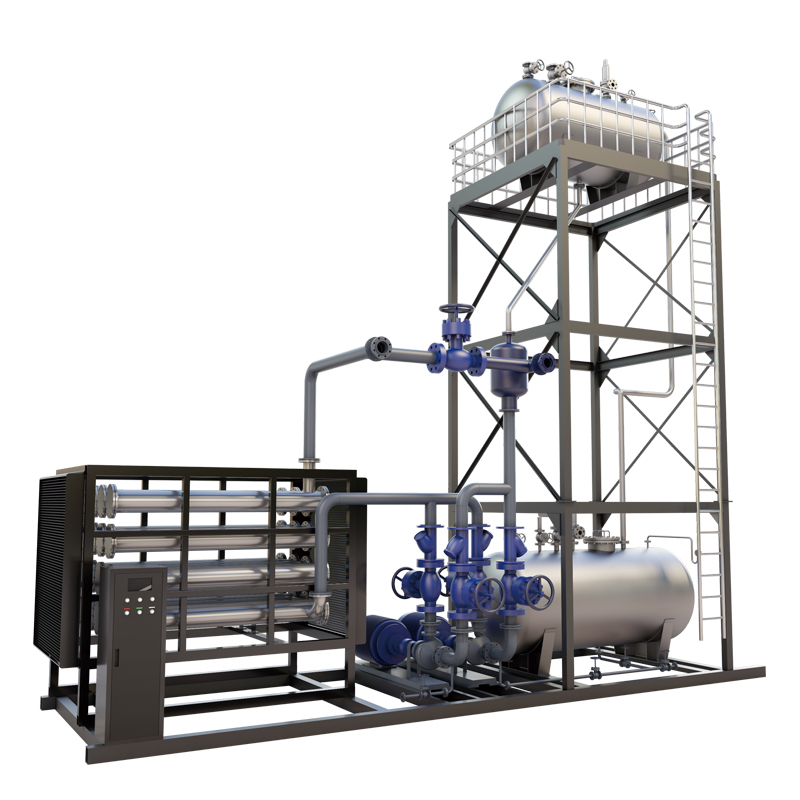fire tube waste heat boiler
Fire Tube Waste Heat Boiler An Overview
In the industrial landscape, energy efficiency has become a focal point for businesses striving to reduce their operational costs and minimize their environmental impact. Among the various technologies available to achieve these goals, the fire tube waste heat boiler stands out as an effective solution. This type of boiler utilizes waste heat generated from industrial processes to produce steam or hot water, significantly enhancing energy recovery.
A fire tube waste heat boiler operates on a fundamental principle it absorbs heat from exhaust gases produced during combustion processes, such as those in furnaces, engines, or turbines. The design of a fire tube boiler consists of a series of tubes submerged in water, where hot flue gases flow through the tubes, transferring heat to the surrounding water to generate steam. This steam can then be used for various applications, including power generation, heating, and process operations.
One of the key advantages of fire tube waste heat boilers is their relatively simple design, which allows for ease of operation and maintenance. The boiler’s compact structure makes it suitable for facilities with limited space. Furthermore, because they are designed to operate under lower pressure conditions, fire tube boilers tend to require less stringent safety measures compared to water tube boilers, thus reducing operational risks.
Another significant benefit is the ability to recover energy that would otherwise be wasted. In many industrial processes, a considerable amount of heat is released into the environment through exhaust gases. By capturing this waste heat, businesses can improve their overall energy efficiency and lower fuel consumption, leading to reduced greenhouse gas emissions. This not only helps in achieving sustainability goals but also results in substantial cost savings over time.
fire tube waste heat boiler

Moreover, fire tube waste heat boilers can be integrated with other systems such as combined heat and power (CHP) systems, further enhancing their effectiveness. By utilizing the steam produced by the boiler, a plant can simultaneously generate electricity and provide heating, thus maximizing the utility of the energy sourced from waste heat.
In terms of application, fire tube waste heat boilers find use across various industries, including petrochemical, food processing, metalworking, and textile manufacturing. Each of these sectors produces significant amounts of waste heat as a byproduct of their operations, creating a substantial opportunity for energy recovery through fire tube technology.
However, while fire tube waste heat boilers offer numerous advantages, it is essential for companies to conduct a thorough analysis before implementation. Factors such as the temperature and composition of the flue gases, as well as the specific energy needs of the facility, must be carefully considered to ensure optimal performance and return on investment.
In conclusion, fire tube waste heat boilers represent an important technology in the pursuit of energy efficiency and sustainability in industrial operations. By harnessing waste heat that would otherwise be lost, these systems not only contribute to cost savings but also support broader environmental initiatives. As industries continue to seek innovative ways to improve their energy usage, fire tube waste heat boilers will play a critical role in shaping a more sustainable future.
-
Top Electric Steam Boiler Manufacturers – Efficient Industrial SolutionsNewsJul.29,2025
-
Top Electric Steam Boiler Manufacturers | Reliable Industrial SolutionsNewsJul.29,2025
-
OEM Steam Boiler Solutions for Custom Needs | High Efficiency & VersatilityNewsJul.29,2025
-
High-Efficiency Thermal Oil Boiler for Industrial Heating SolutionsNewsJul.29,2025
-
Top Electric Steam Boiler Manufacturers for Industrial EfficiencyNewsJul.28,2025
-
Top Electric Steam Boiler Manufacturers | Industrial Solutions & CustomizationNewsJul.27,2025

